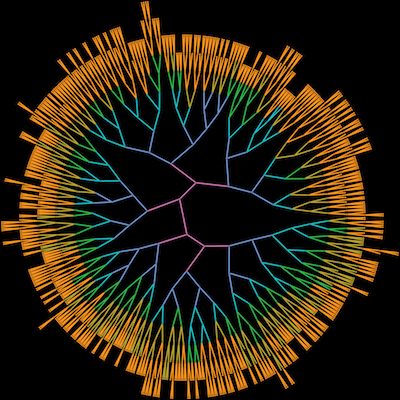
A paper RCC eResearch Analyst Dr Nick Hamilton is a senior author on was published in the prestigious journal Development on Friday, 1 December.
His paper covers an Institute for Molecular Bioscience (IMB) research discovery of the mathematical rules that define the growth pattern of the ureteric tree in the kidney.
Nick, an eResearch Analyst for RCC and QCIF, is also an Institute Bio-Mathematician at UQ’s IMB.
In human anatomy, the ureteric tree is a branching tree-like structure that is formed during kidney development. At the end of each branch a nephron is created, the fundamental filtering unit of the kidney. Nephron number varies widely in humans, from 200,000 to 2 million, with smaller numbers of nephrons being associated with poor kidney function and may arise in response to a wide array of genetic and environmental insults.
A healthy adult has anywhere between 800,000 and 1.5 million nephrons, while a diseased kidney may have as few as 200,000 nephrons.
The IMB research team analysed the ureteric tree in developing mouse kidneys.
Dr Nick said IMB is excited about the mathematical discovery. “In some ways, it's like finding one of the patterns of nature like the Fibonacci sequence or Golden ratio in shell patterns and sunflower seed patterns,” he said.
“Now that we understand how tightly regulated the structure of the tree is when it is developing, we hope to find the factors that affect this structure and that may lead to a larger or smaller tree, and hence more or fewer nephrons. In this way, it may be possible to find new approaches to treatment of kidney disease which affects one in 10 Australians over the age of 18, and costs more than $4 billion to treat each year.”
The paper is titled, ‘Branching morphogenesis in the developing kidney is governed by rules that pattern the ureteric tree’.



